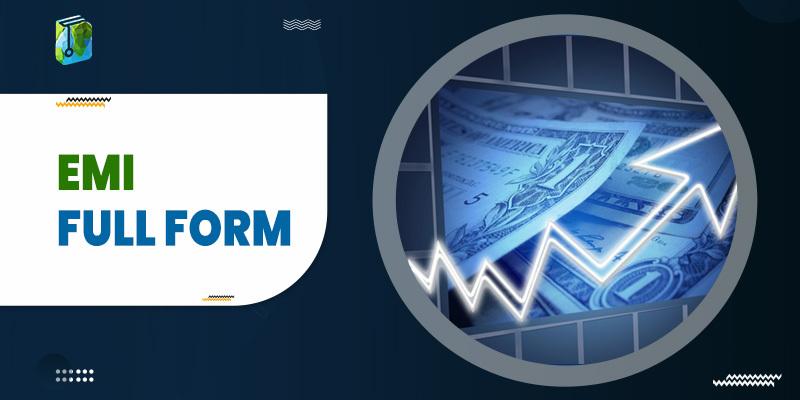EMI is a fixed amount paid by a borrower to a lender at a specified date each calendar month for a given period. EMI is used to pay off both interest and principal amounts monthly until the repayment of the whole loan amount. Equated monthly installment is the EMI Full-Form. This article includes the objective of EMI, how EMI is calculated, its advantages and disadvantages, along with the EMI full form.
EMI Full Form
EMIs are very different from variable payment plans, wherein the borrower can make higher payments. Still, in EMIs, borrowers can make fixed payments each month, provided there is no default or part payment in between.
The benefit of an EMI for borrowers is that they know precisely how much money they will need to pay toward their loan each month, which makes their budgeting process more comfortable.
How does it work?
EMI constitutes the principal amount and a specific rate of interest to be paid where the primary component is lesser than the interest component in the initial period of repayment, and the rate of interest will decrease gradually. The principal amount will increase with every subsequent compensation. The interest price depends on the amount borrowed, the duration for which it is hired, and the lender.
Calculation of EMI
The following parameters are required to produce the exact amount of monthly installments:
- Loan amount/principal amount – The amount borrowed by the lender
- Tenure period- The time asked by the lender to repay the loan amount with interest.
- Interest Rate – The lender charges the interest on the principal amount.
- Processing Fee (If any)
The amount to be paid as monthly installments can be derived using the Flat interest rate approach and Diminishing Balance interest rate approach.
-
Flat Interest Rate –
Under this approach, the interest is calculated on the principal amount, which remains constant throughout the tenure period. It is generally applied to short-term loans.
For example,
o Principal amount: Rs 500,000
o A rate of interest: 6.5%
o Total duration: 3 years
EMI= {500000+ (500000*3*6.5/100)}/(3*12) = Rs 16,597
-
Diminishing balance interest rate:
Under this approach, the interest is calculated on the borrowed principal amount for the first month, and the subsequent months’ interest is calculated on the outstanding loan amount. For example-
o Principal amount: Rs 500,000
o Rate of interest: 6.5%
o Total duration: 3 years
EMI = [P x R x (1+R)^N]/[(1+R)^N-1
[( 500000*.065)*(1+.065/12)^36] / [(1+.065/12)^36-1]= Rs 15324
Advantages of EMI
- Consumers with a steady flow of income can afford items by making payments in an installment that they would not have been able to purchase by making full payments. Thus an EMI gives freedom to purchase a home, car, home appliances, and cell phones, which they can’t make lump-sum payments.
- Under the EMI scheme, one can choose the amount of installment payment and the duration for repayment of the whole principal amount according to their financial condition, thus providing flexibility in payments.
- The EMI option omits the presence of a middleman for processing the loan.
Disadvantages of EMI
- EMI is long-term debt. One has to pay the number of installments until the entire loan is paid off.
- One doesn’t have to pay interest if the payment is made all at once, thus saving the interest cost.
- There is no room for escape if one fails to make timely payments. One may face the consequences like repossession of purchased commodities, heavy penalties, and strict legal action.
Conclusion
EMI full form is Equated monthly installment. EMI refers to the fixed amount paid by a borrower to a lender at a specified date each calendar month for a given period. It is used to pay off both interest and principal amounts monthly until the repayment of the whole loan amount.
People are also reading:
- DVD Full Form
- DLSR Full Form
- SEO Full Form
- CV Full Form
- CRM Full Form
- CNG Full Form
- CCTV Full Form
- BMW Full Form

